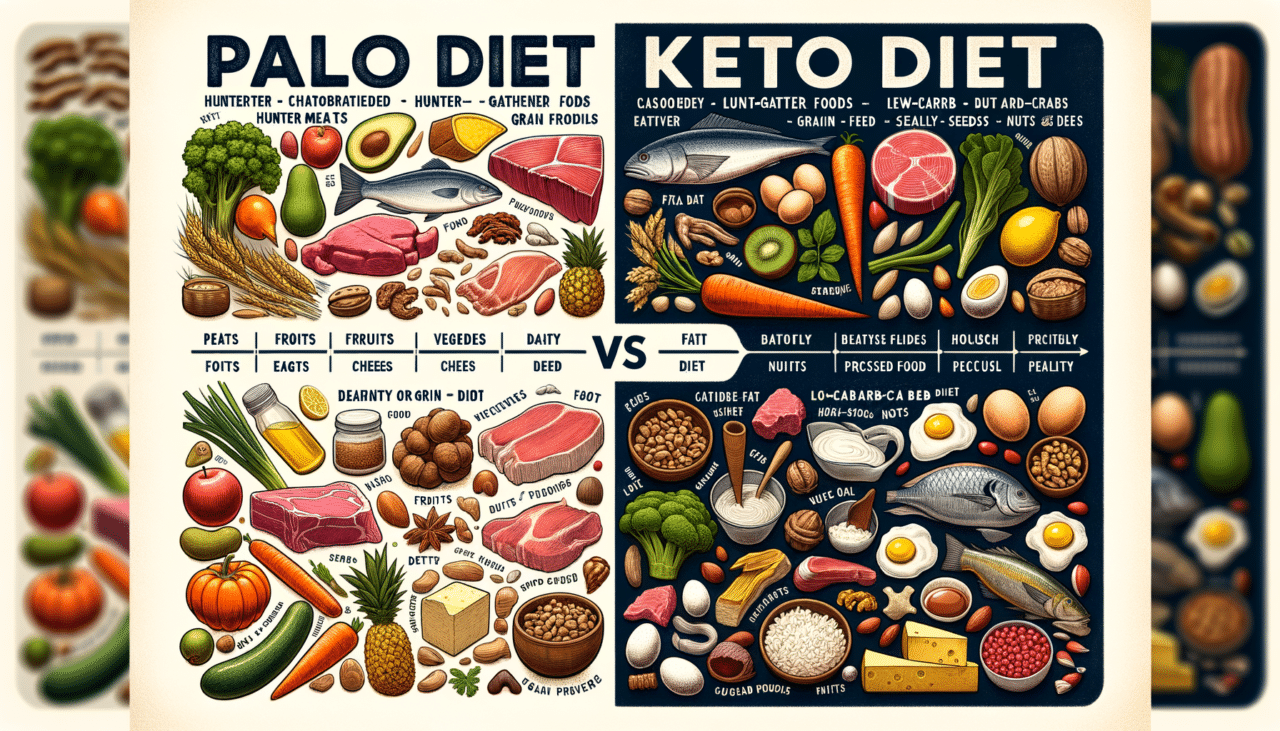When it comes to popular dietary trends, the Paleo and Keto diets often come up in conversation. Both have been touted for their potential health benefits, but they differ significantly in their approach and principles. In this article, we will explore the key differences between the Paleo and Keto diets, providing a comprehensive comparison to help you make an informed decision. We’ll also include a comparative table highlighting the main points of each diet.
What is the Paleo Diet?
The Paleo Diet, often referred to as the “caveman diet,” is based on the idea of eating like our ancestors did during the Paleolithic era. The diet emphasizes whole, unprocessed foods that were available to hunter-gatherers, aiming to replicate the dietary patterns of early humans. The core principle of the Paleo diet is to consume foods that are as close to their natural state as possible.
Key Characteristics of the Paleo Diet:
- Foods to Eat: Lean meats, fish, fruits, vegetables, nuts, and seeds.
- Foods to Avoid: Processed foods, grains, legumes, dairy products, refined sugar, and artificial additives.
- Focus: Emphasis on whole foods and nutrient density.
- Lifestyle: Encourages an active lifestyle, mirroring the physical activity of our ancestors.
What is the Keto Diet?
The Ketogenic (Keto) Diet is a high-fat, low-carbohydrate diet designed to induce a state of ketosis in the body. Ketosis is a metabolic state where the body burns fat for fuel instead of carbohydrates. The primary goal of the Keto diet is to shift the body’s metabolism towards burning fat, which can potentially aid in weight loss and improve certain health conditions.
Key Characteristics of the Keto Diet:
- Foods to Eat: High-fat foods such as meats, fatty fish, eggs, dairy, oils, nuts, seeds, and low-carb vegetables.
- Foods to Avoid: High-carb foods like grains, legumes, fruits (most), starchy vegetables, and sugar.
- Focus: High fat intake, moderate protein, and very low carbohydrates.
- Lifestyle: Emphasizes portion control and macronutrient tracking.
Comparative Table: Paleo Diet vs. Keto Diet
| Aspect | Paleo Diet | Keto Diet |
|---|---|---|
| Primary Focus | Eating whole, unprocessed foods. | Inducing ketosis through low-carb, high-fat intake. |
| Macronutrient Ratio | Balanced with emphasis on proteins and fats. | High fat, moderate protein, very low carbs. |
| Food Restrictions | Avoids grains, legumes, dairy, and processed foods. | Avoids high-carb foods, focuses on low-carb options. |
| Health Benefits | Promotes nutrient-dense foods and natural eating. | Supports weight loss, may improve metabolic health. |
| Sustainability | Encourages a holistic lifestyle approach. | Requires strict adherence to macronutrient ratios. |
| Flexibility | More flexible in food choices. | Less flexible due to macronutrient constraints. |
| Target Audience | Individuals seeking a balanced, whole-food approach. | Individuals aiming for rapid weight loss or specific metabolic goals. |
Conclusion
Choosing between the Paleo and Keto diets depends largely on your personal health goals, lifestyle preferences, and dietary needs. The Paleo diet is ideal for those who prefer a balanced, whole-food approach and are focused on sustainable, long-term health. On the other hand, the Keto diet may be more suitable for individuals aiming for rapid weight loss or those with specific metabolic health objectives.
Both diets have their unique benefits and challenges, and it’s crucial to consider your individual needs before making a decision. Always consult with a healthcare professional or a registered dietitian when making significant changes to your diet.
By understanding the core principles and differences between the Paleo and Keto diets, you can make an informed decision that aligns with your health goals and lifestyle.

Comments (0)
There are no comments here yet, you can be the first!